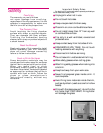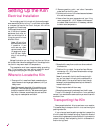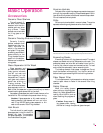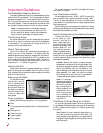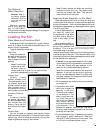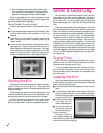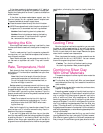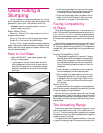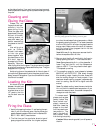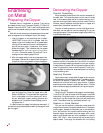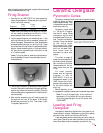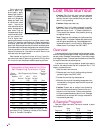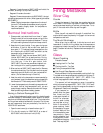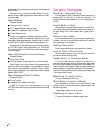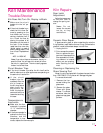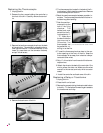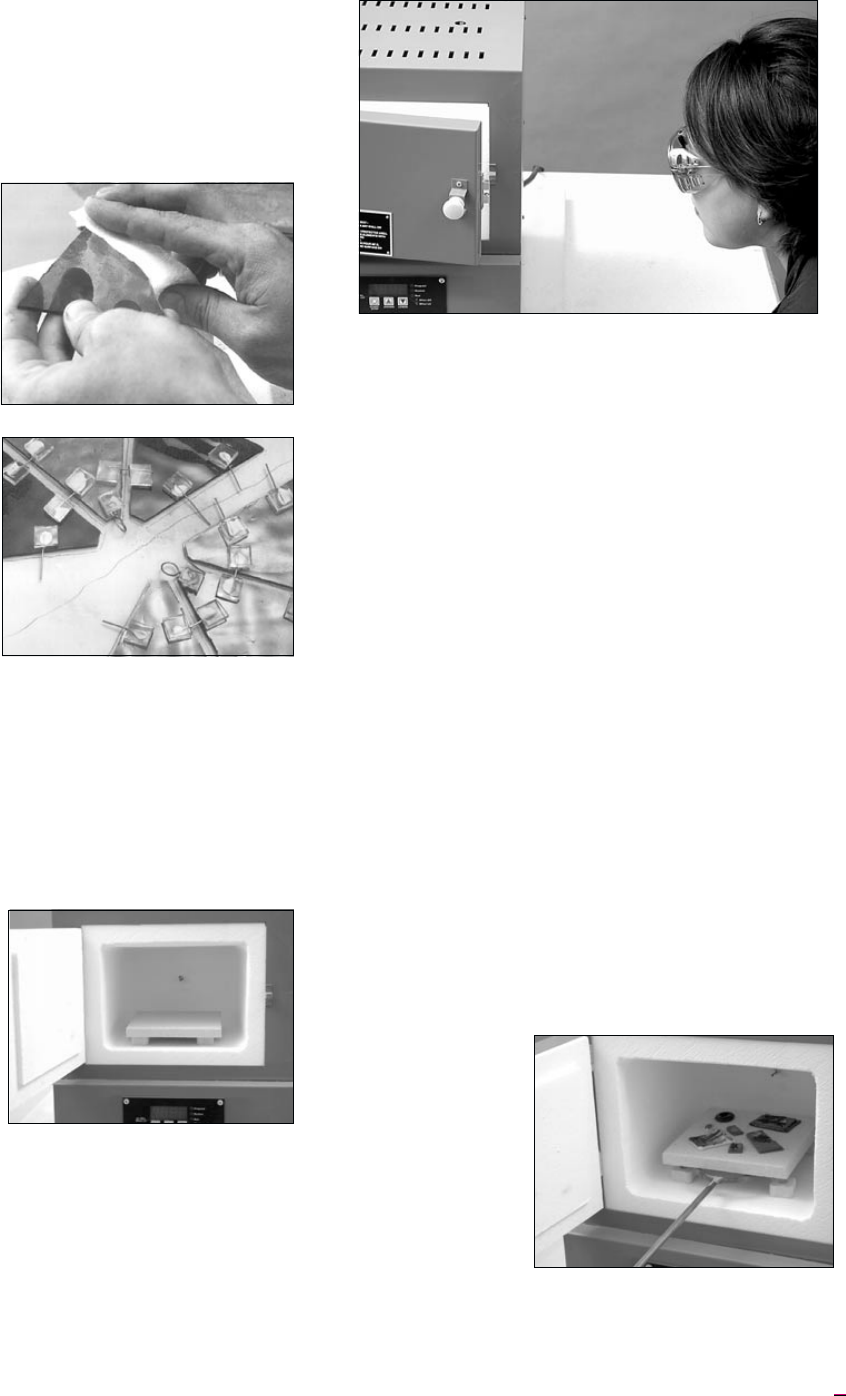
on the side of caution if you aren’t sure how long to anneal.
Smallprojects suchasearringsrarely needannealingtimeas
they cool.
Cleaning and
Gluing the Glass
Grease, dirt, and
fingerprints etch per
-
manently into the
glass during firing.
Clean the glass with
glasscleaner (thetype
without silicones),
rubbing alcohol, or
even plain water just
before assembling
the pieces on the kiln
shelf.
Use white glue,
such as Elmer’s
diluted 1:1with water,
to hold the glass
pieces together after
you place them on the
kiln shelf. Use the
glue sparingly.Glue is
especially important
when fusing wire into the glass. The glue prevents the glass
or wire from moving out of place before they fuse. The glue
disappears during firing.
Avoid using glue on the coated side of dichroic glass. If
you lay dichroic glass carefully onto the piece,glue is unnec-
essary, so avoid it altogether if youdo not know which side of
the dichroic is coated.
Loading the Kiln
Air should circulate
between the shelf and
the bottom of the kiln,
so place three or four
1/2” posts in the kiln.
Lay the shelf over the
posts.
Firing the Glass
1 Ventkiln by opening the door½” and leaving the vent
hole (if your kiln has one) open. Venting allows the
gases released toescape. When thekiln reaches 500 -
800° F / 260 - 426°C, close the door.
2 The first time you fire a particular brand or type of
glass, program the controller for a higher tempera
-
ture than the estimated fusing temperature. Watch
the glass by opening the door ½” for several seconds
at a time. Shut the kiln off when the glass fuses the
way you want. Make a note of the shut-off tempera
-
ture. For future firings, program the kiln for that
temperature and rate.
Note:With everyfiring,be sureyou arenearthe kiln
before the expected shut-off time.
3 After you shut the kiln off, vent the kiln for five min-
utes by opening the door 1”. Then close the door.
Note: Some glass artists flash cool the glass after it
fuses. They vent the kiln until the temperature
drops to 1000° F. Then they close the door again.
This speeds up cooling.
4 The annealing range for most glasses is between
950°/510°C and 700°F/371°C. Cool slowly through
this annealing range. Leaving the door closed will
slow the cooling enough for most projects. If you
need even slower cooling, program a separate seg
-
ment for cooling. See the kiln’s digital controller
manual.
Note: For safest cooling, leave the ware inside the
kiln until the kiln reaches room temperature. If you
remove the ware too soon, the sudden temperature
change can crack the piece.
To remove small
pieces, such as glass
jewelry, before they
have cooled com
-
pletely, remove the
shelf also. Leave the
pieces on the shelf
untilthey reachroom
temperature. The
heat in the shelf will
help prevent them
from cooling too quickly.
Caution: Before removinga shelf, turn offpower to
the kiln.
11
Looking at the glass during firing. Open the door about ½”. Always
wear firing safety glasses when looking at the hot glass.



